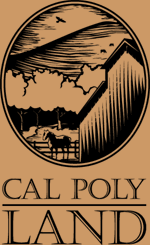We Do Bees: Bee Lab & Enterprise Project |
|
|
Beekeeping Class
Beekeeping for me started with the beekeeping class I took during the fall with Professor Scott Jeffreys, Fruit Science Department. The class taught me about the hard work it takes to succeed in the beekeeping industry. We kept our hives next to our working shed at the orchard next to the parking lot at Mustang Village 2. Our other lab is across the street surrounded by sage flowers. These distinct locations gave us sage honey and orange honey. Our sage honey is runny and doesn't crystallize. It has a golden orange hue. The orange honey is thicker and darker and does crystallize. The first lab involved taking the sage honey frames out of all the hives and separating the honey. The second lab dealt with raising queen bees using cell building grafting technology. We extracted 20 different successful queen cells. The last labs prepared for winter by extracting the remaining honey and leaving some for the bees to survive and produce during the winter. Scott Jeffreys rented some of the strong hives to farmers and sold some to agricultural students or alumni for a special deal of 125 dollars opposed to 150 dollars at market value. Our last two labs put together new bee hives that we would use during the spring quarter. We sold most of our old bee hives for 50 dollars not including any bee's or queens because we already took out all the goods they created. We put together around another 35 new hives to be used during our enterprise project in the spring. Enterprise project We started by cleaning up the bee room, centrifuge, extractor, honey tank, and sticky floor. By week three we had our queens working with 500-600 bees per hive and about 50 drones to maintain an increasing population for the queen to lay eggs. Week four we started seeing some honey production and increasing amounts of brood frames (baby bees) populating our hives, but they were still not producing amounts of honey we had hoped for. During weeks 5-8 we worked on decreasing populations of ants and mites with chemicals and moved around honey frames, pollen frames, and brood frames to even out the strong hives with the weak hives to increase survival and maximize honey production. This summer we will extract most of the honey from the hives, start queen raising, and sell or rent out our hives to beekeepers and farmers in California. Phillip Cartsonas
Back to Beekeeping at Cal Poly
|
